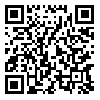Background and Objectives: The aim of this study was to determine the status of snack food consumption and obesity in secondary school male students in district 6 of Tehran Education in 2008-2009.
Methods: This analytical descriptive cross-sectional study was conducted on 460 secondary school male students. Data gathering tool was a questionnaire which was consisted of questions about the frequency, type and amount of snack consumption and measure the height and weight of students. Energy intake from snacks consumed was calculated by Food Processor software and snacks weight was calculated by using the book home criteria. CDC curves were used to calculate obesity. The data was analyzed using the statistical software SPSS (version 16) and descriptive and analytical methods.
Results: 17.9% of the students had consumed unhealthy snacks and 60.8% had consumed healthy and unhealthy snacks. 17.8% of the students were overweight and 15.4% were obese. There were significant correlations between the frequency of snack consumption and age of the student (r =.16, p=.002), energy intake from snacks and household income (r =.12, p=.004), obesity and the age of the student (p=.002), and between obesity and total number of the children in family (p=0.02)
Conclusion: The percent of unhealthy snake consumption, over weight and obesity are undesirables in under studied students and the promotion interventions in the field is essential.
Received: 2016/09/13 | Accepted: 2016/12/14 | Published: 2016/12/18
| Rights and permissions | |
 |
This work is licensed under a Creative Commons Attribution-NonCommercial 4.0 International License. |


